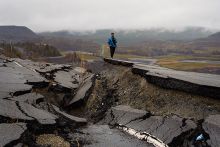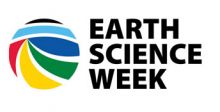This webinar will focuses on efforts to anticipate, mitigate, and respond to coastal storms, erosion, and associated hazards at the federal, state, and local level.
Coastal hazards are a widespread challenge that cost millions (and sometimes billions) of dollars in the U.S. every year due to property loss and spending on mitigation measures. Based on the most recent U.S. Census, over 39% of the U.S. population lives in areas that may undergo significant coastal flooding during a 100-year flood event1. Additionally, six of the ten most expensive weather-related disasters in U.S. history have been caused by coastal storms1,2. Reducing risk and responding to coastal hazards is an ongoing challenge that relies on close coordination and cooperation between geoscientists, coastal planners, emergency managers, and communities at all levels.
An introductory talk and three case studies from around the U.S. cover coastal storm and erosion hazards in the U.S., as well as examples of coastal hazard planning from the Pacific, Gulf, and Atlantic coasts, with a focus on how geoscience informs planning at all levels. Speakers from California, Texas, and Georgia discuss the impacts of coastal storms and erosion, tools used for coastal hazard mitigation planning in their regions, and examples of community engagement and coordination.
Our speakers are:
- Maria Honeycutt, Coastal Hazards Specialist, NOAA Office for Coastal Management |
 Slides
Slides  Video
Video - Patrick Barnard, Research Geologist, USGS Pacific Coastal and Marine Science Center |
 Slides
Slides  Video
Video - Jeff Taebel, FAICP, Houston-Galveston Area Council |
 Slides
Slides  Video
Video - Jennifer Kline, Coastal Management Program, Georgia Department of Natural Resources |
 Slides
Slides  Video
Video
Webinar Co-Sponsors:
American Institute of Professional Geologists; American Meteorological Society; Association of Environmental & Engineering Geologists; Consortium for Ocean Leadership; Environmental and Engineering Geophysical Society; Federal Emergency Management Agency; Geological Society of America; Geo-Institute of the American Society of Civil Engineers; International Association of Emergency Managers; National Oceanic and Atmospheric Administration; U.S. Geological Survey.
References:
1 Coastal Flood Risks: Achieving Resilience Together. Federal Emergency Management Agency
2 Billion-Dollar Weather and Climate Disasters: Table of Events. National Centers for Environmental Information
CEU Credits
To earn CEU credits, please complete the associated on-demand GOLI course that was developed from this webinar with a grade of 70% or higher and then submit your application for CEUs. CEUs are awarded from the American Institute of Professional Geologists. To view the full list of on-demand GOLI courses, please browse the GOLI course catalog.
Resources to learn more:
 View this webinar's Question & Answer session
View this webinar's Question & Answer session- Federal Emergency Management Agency: Pre-Disaster Recovery Planning Guide for Local Governments
- National Oceanic and Atmospheric Administration: Digital Coast website
- U.S. Geological Survey: Coastal Change Hazards Portal
- U.S. Climate Resilience Toolkit website
- Our Coast, Our Future Project website: sea level rise and storm scenarios for north-central California coast, San Francisco Bay, and Southern California, including an interactive viewer that shows socioeconomic impacts, flooding, and waves and currents.
- Texas Coastal Watershed Program: Community Health and Resources Management website
- Georgia Department of Natural Resources: Post-Disaster Recovery and Redevelopment Planning Guide
- EARTH Magazine: More than a nuisance: Over time, small floods cost more than extreme events
Search the Geological Surveys Database for reports and factsheets about coastal hazards.




